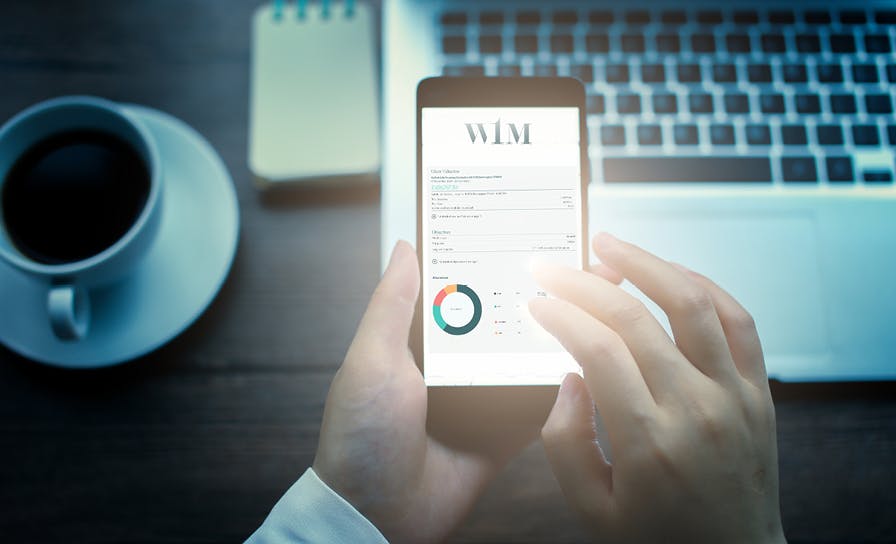Back to school: September markets, active management and diversification

It’s September!
You may not want to be too influenced by seasonality, but September often sees choppy waters in markets. Investors have to assess, after a relatively quiet summer, where valuations are and where they are going to. Quite often, the post-summer-holiday feeling is: “It would be better not to start from here….”. This year, while earnings growth expectations are positive into 2026/7 and we are not negative but around neutral on equities (see CIO Bill Dinning’s video here), we have the prospect of US interest rate cuts while core inflation is above 3%; that hasn’t happened since the Iraq war and may, in hindsight, be regretted. We have UK 30 year gilt yields at high levels showing investor concern on inflation and levels of government borrowing to fund spending. We have the S&P500 trading as if it was a concentrated portfolio with some very high valuations in some stocks dominating it. We have ongoing trade war issues and tariffs on US imports which are heading towards being a $300bn annual cost to consumers and exporters. And, the world’s geopolitical order is somewhat up in the air these days. There are always things to worry about but as James Mee has shown “bears sound smart, but optimism pays” if you are a long term investor. Humans, however, find it difficult not to worry about the short run so, as we go into September and the last third of the year, the key questions investors need to ask relate to proper diversification, being active in mitigating clear risks, remaining conscious of valuations and the ability of portfolios to cope with inflationary pressures.
Be active: Stocks and bonds falling together in 2022 proved that you can be in the right “risk bucket” but not properly diversified, with traditional 60-40 equity-bond passive funds having a particularly torrid time. Bonds falling with stocks, displaying positive correlation, left some supposedly defensive funds down very significantly. Starting from where we are today, after a very strong and long run in US equities giving us high concentration levels, we may well see market indices consolidate and for a long time. The S&P Composite (predecessor to S&P 500) was roughly flat, in nominal terms, over the 20-year period 1929-49. The 1929 crash wiped out most of the prior decade’s gains; it took until the early 1950s for equities to sustainably break out. Other periods are identifiable with equities going broadly sideways, for example 1965-1982, but most recently, with the dot-com bubble, the S&P 500 peaked in March 2000 and didn’t make a new high until 2013. We are not saying there is going to be a crash (despite concentration and some stocks being “expensive”, global growth is positive, US interest rates look set to fall, global earnings growth looks positive into 2026/27), but we are saying just buying the equity index is not always the best solution if you take an evidence based approach. Markets can go sideways for a long time but having a research-driven, bottom up, stock picking approach in global equities can still deliver positive returns in such an environment.
Be diversified: In addition to equities and bonds, W1M multi asset solutions have exposures to absolute return and protection strategies, as well as commodities and property exposures.
Luke Hyde-Smith has pointed out that despite generating free cash flow comparable to Apple, the entire US energy sector is valued at around two thirds that of the value of that company (which has reported essentially flat revenue growth over the past three years). The comparison becomes even more striking when looking at the mining industry: Apple is currently valued at around 15 times the combined enterprise value of the entire US mining sector. Such disparities potentially present opportunities for active, diversified portfolios. And, if inflation surprises on the upside, perhaps because tariffs lead to price increases, having commodity exposure may well provide valuable resilience in portfolios.
Apple vs Energy and Mining Companies - Enterprise Value in $ bn

Source: FactSet, W1M. Data as at 30 June 2025.
The gold price has had a strong run and may be in a consolidation phase; buying gold now may not give a great return quickly. In our Real Assets fund, we have had exposure to gold but also to gold miners which could have significantly more upside than the metal price given current high production margins (the stocks don’t need the gold price to go up to deliver strong earnings growth relative to expectations).
Gold Price vs. Newmont Production Cost ($/oz)

Source: Bloomberg, W1M. Data as at 30 June 2025.
Conclusion: September may or may not be volatile. Focus should not really be on a single month or quarter but if we see some post-holiday-blues in markets, having diversification, which includes not only equities and bonds but also real assets, absolute return and protection strategies, helps when navigating markets. The same is true in the long run.
Past performance is not a reliable indicator of future results. The value of investments and the income derived from them may rise as well as fall, and investors may not get back the amount originally invested. Capital security is not guaranteed.
This material is provided for informational purposes only and does not constitute investment advice or a recommendation. It should not be considered an offer to buy or sell any financial instrument or security. Any investment should be made based on a full understanding of the relevant documentation, including a private placement memorandum or offering documents where applicable. W1M Wealth Management Limited is authorised and regulated by both by the Financial Conduct Authority of 12 Endeavour Square, London E20 1JN, with firm reference number 120776 and the U.S. Securities and Exchange Commission of 100 F Street, NE Washington, DC 20549, with firm reference number 801-63787. Registered in England and Wales, Company Number 02080604.
All rights reserved. No part of this publication may be reproduced, distributed, or transmitted in any form or by any means, including photocopying, recording, or other electronic or mechanical methods, without prior written permission from W1M Wealth Management Limited.
Copyright © 2025 W1M Wealth Management Limited.





